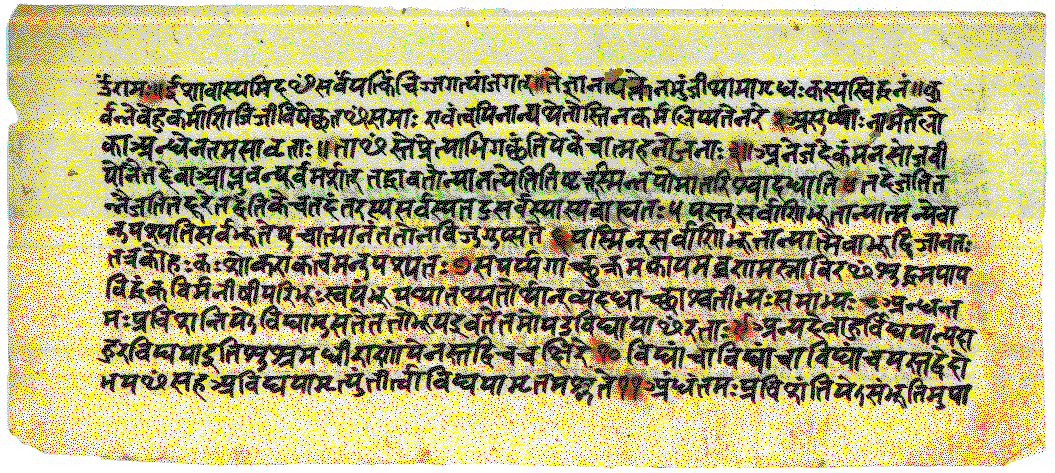Self Alone is All This!
Most Profound Upanishadic Teachings
Muṇḍaka Upaniṣad: 2.2.12: Mantra and Shankara’s Commentary:
ब्रह्मैवेदममृतं पुरस्ताद्ब्रह्म पश्चाद्ब्रह्म दक्षिणतश्चोत्तरेण ।
अधश्चोर्ध्वं च प्रसृतं ब्रह्मैवेदं विश्वमिदं वरिष्ठम् ॥ १२ ॥
भाष्यम् यत्तज्ज्योतिषां ज्योतिर्ब्रह्म, तदेव सत्यम् ; सर्वं तद्विकारः वाचारम्भणं विकारो नामधेयमात्रमनृतमितरदित्येतमर्थं विस्तरेण हेतुतः प्रतिपादितं निगमनस्थानीयेन मन्त्रेण पुनरुपसंहरति — ब्रह्मैव उक्तलक्षणम्, इदं यत् पुरस्तात् अग्रेऽब्रह्मेवाविद्यादृष्टीनां प्रत्यवभासमानं तथा पश्चाद्ब्रह्म तथा दक्षिणतश्च तथा उत्तरेण तथैवाधस्तात् ऊर्ध्वं च सर्वतोऽन्यदिव कार्याकारेण प्रसृतं प्रगतं नामरूपवदवभासमानम् । किं बहुना, ब्रह्मैवेदं विश्वं समस्तमिदं जगत् वरिष्ठं वरतमम् । अब्रह्मप्रत्ययः सर्वोऽविद्यामात्रो रज्ज्वामिव सर्पप्रत्ययः । ब्रह्मैवैकं परमार्थसत्यमिति वेदानुशासनम् ॥
This immortal Brahman alone is in front. Brahman is behind; on the right and on the left. Brahman alone has extended above and below, too. This world is nothing but Brahman, the highest. [Panoli, 182; Gambhirananda, 135].
All this is but Brahman, as defined earlier; that which appears as an object in front of people whose vision is affected by ignorance, is Brahman alone. Similarly, Brahman is at the back, so also on the right, and on the left. Likewise, below and above; whatever is extended everywhere, by way of effects, possessed of name and form is Brahman alone. In brief, all this world is but Brahman, the highest. All ideas of non-Brahman are but ignorance like the idea of the snake superimposed on a rope. Brahman, the One, alone is the Supreme Reality. This is the declaration of the Vedas. [Panoli, 182; Gambhirananda, 135-136]
[Note: The identity of Brahman and the Universe, implied by the sentence, is by way of denying the latter….When we say, ‘Universe is but Brahman,’ we mean Brahman alone exists, an nothing else. [Gambhirananda, p. 136]
Shankara’s Commentary on Kath. Up. 1.3.13:
एवं पुरुषे आत्मनि सर्वं प्रविलाप्य नामरूपकर्मत्रयं यन्मिथ्याज्ञानविजृम्भितं क्रियाकारकफललक्षणं स्वात्मयाथात्म्यज्ञानेन मरीच्युदकरज्जुसर्पगगनमलानीव मरीचिरज्जुगगनस्वरूपदर्शनेनैव स्वस्थः प्रशान्तः कृतकृत्यो भवति यतः
Just as the water in a mirage, the snake on a rope, and dirt in the sky, are eliminated through the perception of the real nature of the mirage, rope, and the sky, similarly by dissolving in the Puruṣa—the Self—through the knowledge of the true nature of one’s own Self, all that is projected by unreal ignorance, which is characterized by action, instrument, and result, and which is but constituted by the three—name, form, and action—one becomes established in the Self and peaceful in mind, one’s goal being accomplished. [Gambhirananda, p. 174].
Grace Notes: All indriya-jañeya jñāna is mithya jñāna only as indriyās operate within the sphere of subject-object duality and conjure up a “world out there” appearing as though separate from the Self/Brahman. The universe that ‘appears as real’ from the vyavahārik driṣti (from the empirical standpoint), upon the dawn of ātma-jñāna, is realized as only apparently real, being the effect of which Brahman alone is the cause.
When with the Grace of Lord and the blessings of the teacher (both being essentially the same) this knowledge dawns, the mumukshu exclaims:
ahamEvedagM sarvam || [Chandogya 7-25-1] अहमॆवेदग्ं सर्वम्
I alone am all this.
AtmaivEdagM sarvam || [Chandogya 7-25-2] आत्मैवॆदग्ं सर्वम्
The Self, indeed, is all this.
After these verses, the Śruti extols the splendor of this Brahma-vidya as follows in Chāndogya Upaniṣad 7-26-2:
न पश्यो मृत्युं पश्यति न रोगं नोत दुःखताम
सर्वम् ह पश्यः पश्यति सर्वमाप्नोति सर्वश
The man of realization does not meet with death, nor disease, nor even sorrow. The man of realization sees everything, attains everything in every way. [Gambirananda, p. 568]
|| ॐ तत्सत् ||


Recent Comments